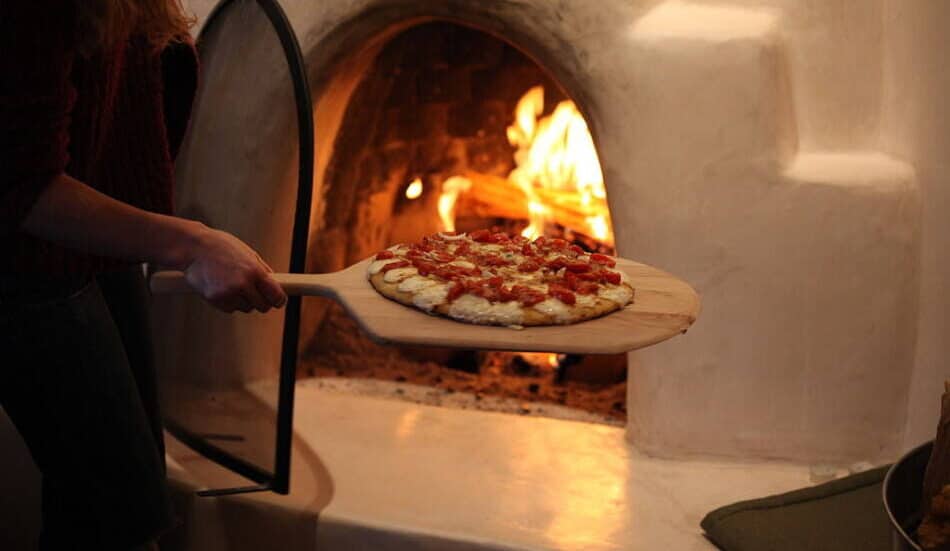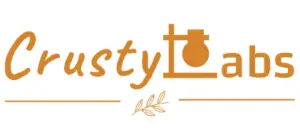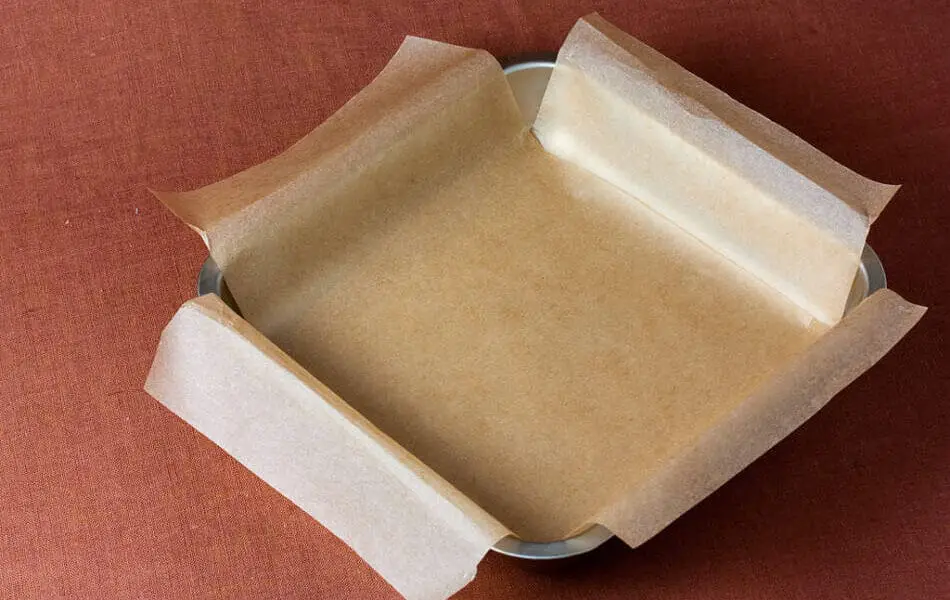Why is parchment paper so commonly used in sourdough bread baking?
Parchment paper works so well for baking sourdough bread because of its heat resistant and non-stick nature, allowing bread to be baked in the oven without burning and sticking; parchment paper is also structurally strong such that it will not tear as you use it to transfer your dough.
Sourdough home bakers typically use a dutch oven for baking, which requires the baker to transfer the dough into a hot preheated dutch oven before the vessel is reloaded into the oven.
We typically cut parchment paper such that it protrudes about 2-3 inches outside of your dough, creating a handle of sorts for your fingers to lift the parchment paper and dough up to transfer it to your dutch oven or baking surface without burning yourself.
Without parchment paper, it is quite precarious to load the dough by hand into a hot dutch oven, as your fingers would have to cradle the dough from the bottom; there is a high risk of burning your fingers as they are very close to the hot metal walls.
Parchment paper also reduces cleaning as there is no need to grease or dust your baking surfaces with flour. It is reusable up to a few times, or until the parchment paper becomes burnt and brittle.
4 Alternatives to Parchment Paper for Baking
1. Aluminium Foil
Aluminium foil can be used instead of parchment paper, but you would have to dust it with flour or grease it with oil to prevent your bread from sticking; aluminium foil does not have the inherent non-stick ability as parchment paper.
Aluminium foil is oven heat resistant, and strong enough that you can use it to lift your dough, and transfer it into your dutch oven without the aluminium foil tearing.
Since aluminium foil is a metal, it has a high thermal conductivity, causing the bottom of your loaf to rise in temperature quicker, which may lead to a burnt bottom.
If you find that the bottom of your loaf is burning, you can place a baking pan between the bottom heating element of your oven and your cooking vessel to reduce the direct heat of the heating element from burning the bottom of your loaf.
Check out this article ‘’ to understand why the bottom of your loaf is burning, and learn other baking techniques to prevent the bottom of your loaf from burning.
2. Silicon Baking Mat

Silicon baking mats can also be used instead of parchment paper. Silicon baking mats are oven heat resistant, non-stick and reusable up to a few hundred times. The only downsides of silicon baking mats is that it is large and rather stiff, so you wouldn’t be able to fit it inside a dutch oven.
The best way to use a silicon baking mat is to load your dough on the silicon baking mat, and place it on a baking tray in the middle of the oven. Fill up a pot with hot boiling water and leave it at the bottom most shelf of the oven so that the loaf bakes in a steamed environment, which ensures maximum oven spring, and a thin crust.
About half way through the bake, open the oven door to release all the steam, and remove the pot of boiling water such that the loaf is allowed to finish baking in a dry environment; this ensures that the crust remains crispy.
The best part about the silicon baking mat is that it is made to be reusable. Just wash it after every bake, and it is good to go. A silicon baking mat can be reused up to a few hundred times, or until it starts to break apart.
The best silicon baking mats are made by Silpat. Silpat baking mats are the most durable, easy to clean, and does not discolor like its cheaper options. If you get the half-size Silpat baking mats, it even fits nicely in your baking tray without any of its sides protruding out of the tray.
3. Coating your baking surface with dusting flour
A parchment paper is not necessary to produce a good sourdough bread. Instead of using parchment paper, we can dust our baking vessel with flour instead. The coating of flour creates a non-stick surface which prevents the dough and baked bread from sticking to it.

The challenge with using only dusting flour is in the process of transferring your proofed dough onto the hot baking surface. If you are using a baking stone, a baking peel can help you load your dough into the oven safely without burning yourself (just like how you would load a pizza).
Dust your baking peel with flour so that the dough will not stick to it. Load the dough onto the peel, bring the peel right on top of your baking stone where you would like the dough to sit, then slide the dough onto the baking stone. If you do not own a baking peel, a baking tray that is dusted with flour works just as well.
If you are using a cast iron dutch oven to bake your sourdough bread, cut out piece of aluminium and place the dough onto it, then grip the sides of the aluminium foil with your fingers and slowly lower it into the cast iron dutch oven. Leave the aluminium foil inside the dutch oven during the bake.
4. Coating your baking surface with oil
Oiling your baking surfaces such as your baking stone, baking tray, or aluminium foil works just as well to prevent your dough from sticking.
Oil increases the thermal conductivity between the dough and the baking surface, causing it to rise in temperature quicker, which may result in the bottom of your loaf from burning. If that is the case, you can place a baking tray between your baking surface and the bottom heating element of your oven to prevent the direct heat of the oven from scorching the bottom of your loaf.
When baking with a cast-iron dutch oven, you need to use aluminium foil to transfer the dough into the dutch oven pot, to prevent your fingers from burning. You can oil the aluminium foil to prevent the dough from sticking to it, and leave the aluminium foil inside the dutch oven during the bake.
Do not use wax paper instead of parchment paper for baking!
Wax Paper or Papel Manteca has a thin coating of wax which prevents food from sticking to it. However it is not heat resistant, and therefore it should not be used in the oven. The hot temperature of the oven will cause the wax to melt and even ignite.
Do not use regular paper instead of parchment paper for baking!
Regular paper will ignite in the oven at 232 Celcius, which is the same oven temperature required for baking sourdough breads, and hence it should not be used for sourdough bread baking. Your dough will also stick to regular paper as it does not have the same non-stick surface as parchment paper.
Do not use brown paper and grocery bags instead of parchment paper for baking!
Brown paper grocery bags will ignite in the oven at 232 Celcius, which is the same oven temperature required for baking sourdough breads, and hence it should not be used for sourdough bread baking. Your dough will also stick to your brown paper bags as it does not have the same non-stick surface as parchment paper.
Although brown paper bags are commonly used in baking chicken and turkey in the oven, these are done over lower temperatures below 200 Celcius, hence in this application the bag will not catch on fire. When baking sourdough bread, the oven temperature gets to about 235 Celcius at the minimum, and the brown paper bag will ignite at this temperature.

